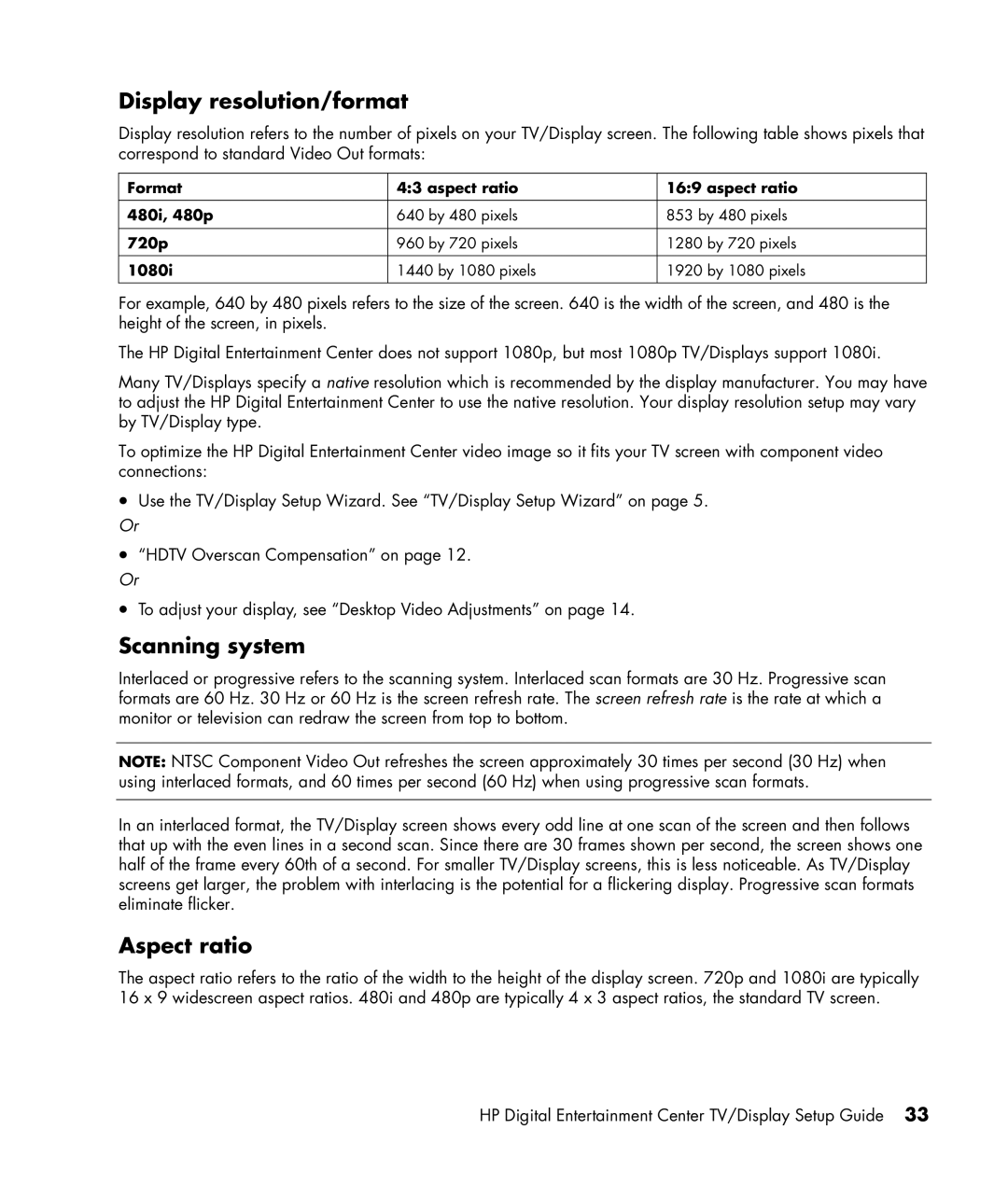
Display resolution/format
Display resolution refers to the number of pixels on your TV/Display screen. The following table shows pixels that correspond to standard Video Out formats:
Format | 4:3 aspect ratio |
|
|
480i, 480p | 640 by 480 pixels |
|
|
720p | 960 by 720 pixels |
|
|
1080i | 1440 by 1080 pixels |
|
|
16:9 aspect ratio
853 by 480 pixels
1280 by 720 pixels
1920 by 1080 pixels
For example, 640 by 480 pixels refers to the size of the screen. 640 is the width of the screen, and 480 is the height of the screen, in pixels.
The HP Digital Entertainment Center does not support 1080p, but most 1080p TV/Displays support 1080i.
Many TV/Displays specify a native resolution which is recommended by the display manufacturer. You may have to adjust the HP Digital Entertainment Center to use the native resolution. Your display resolution setup may vary by TV/Display type.
To optimize the HP Digital Entertainment Center video image so it fits your TV screen with component video connections:
•Use the TV/Display Setup Wizard. See “TV/Display Setup Wizard” on page 5.
Or
•“HDTV Overscan Compensation” on page 12.
Or
•To adjust your display, see “Desktop Video Adjustments” on page 14.
Scanning system
Interlaced or progressive refers to the scanning system. Interlaced scan formats are 30 Hz. Progressive scan formats are 60 Hz. 30 Hz or 60 Hz is the screen refresh rate. The screen refresh rate is the rate at which a monitor or television can redraw the screen from top to bottom.
NOTE: NTSC Component Video Out refreshes the screen approximately 30 times per second (30 Hz) when using interlaced formats, and 60 times per second (60 Hz) when using progressive scan formats.
In an interlaced format, the TV/Display screen shows every odd line at one scan of the screen and then follows that up with the even lines in a second scan. Since there are 30 frames shown per second, the screen shows one half of the frame every 60th of a second. For smaller TV/Display screens, this is less noticeable. As TV/Display screens get larger, the problem with interlacing is the potential for a flickering display. Progressive scan formats eliminate flicker.
Aspect ratio
The aspect ratio refers to the ratio of the width to the height of the display screen. 720p and 1080i are typically 16 x 9 widescreen aspect ratios. 480i and 480p are typically 4 x 3 aspect ratios, the standard TV screen.
HP Digital Entertainment Center TV/Display Setup Guide 33
